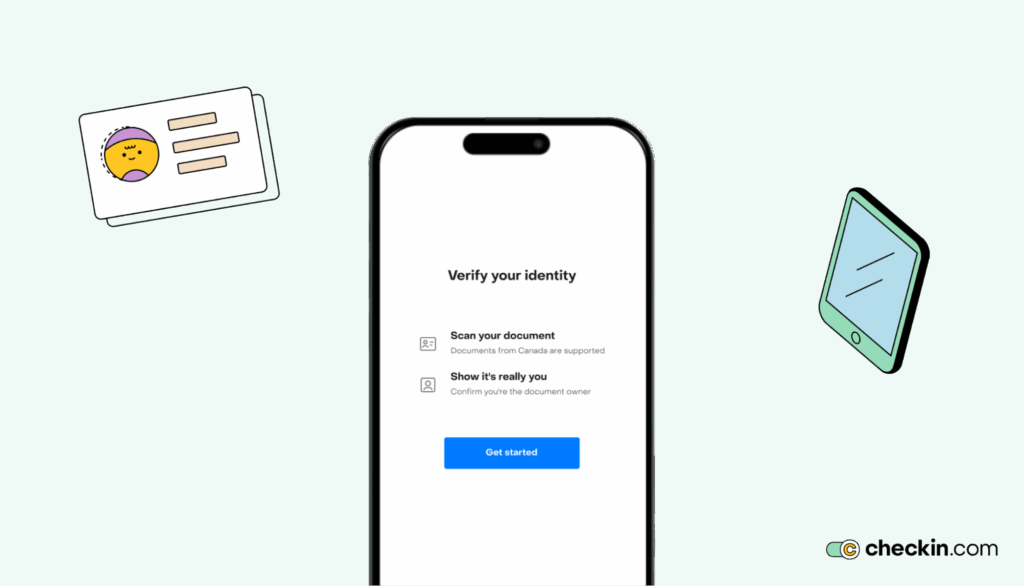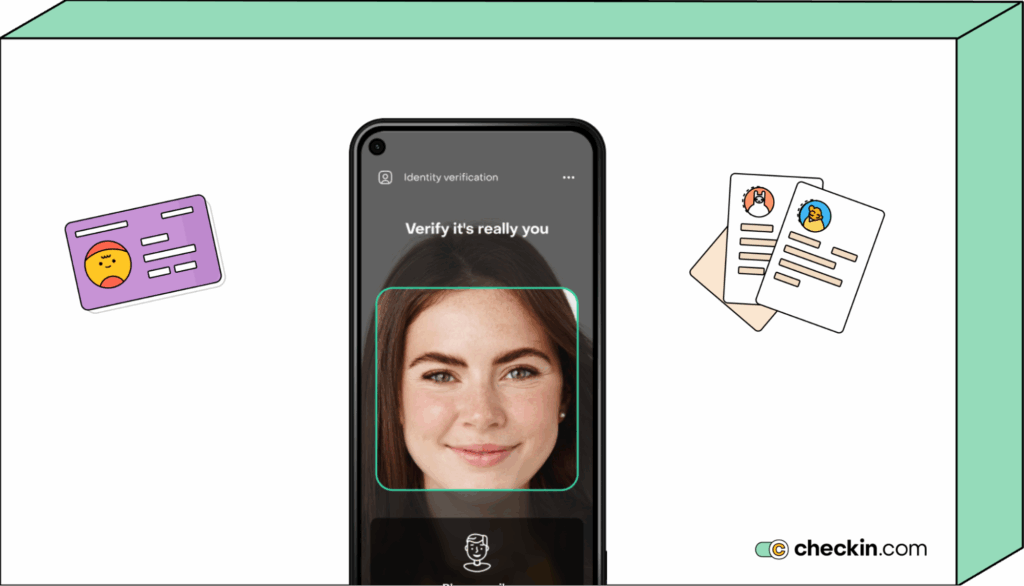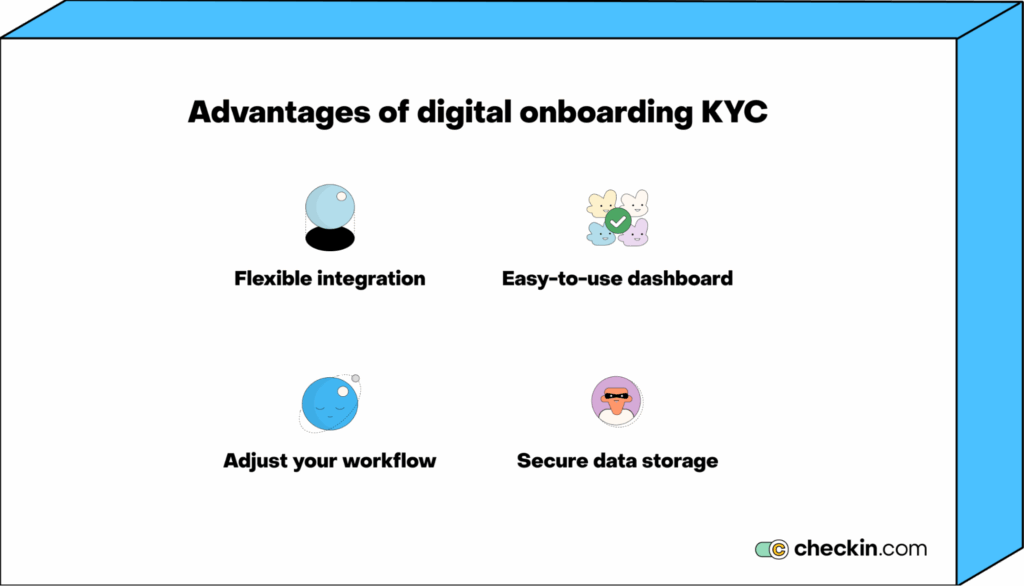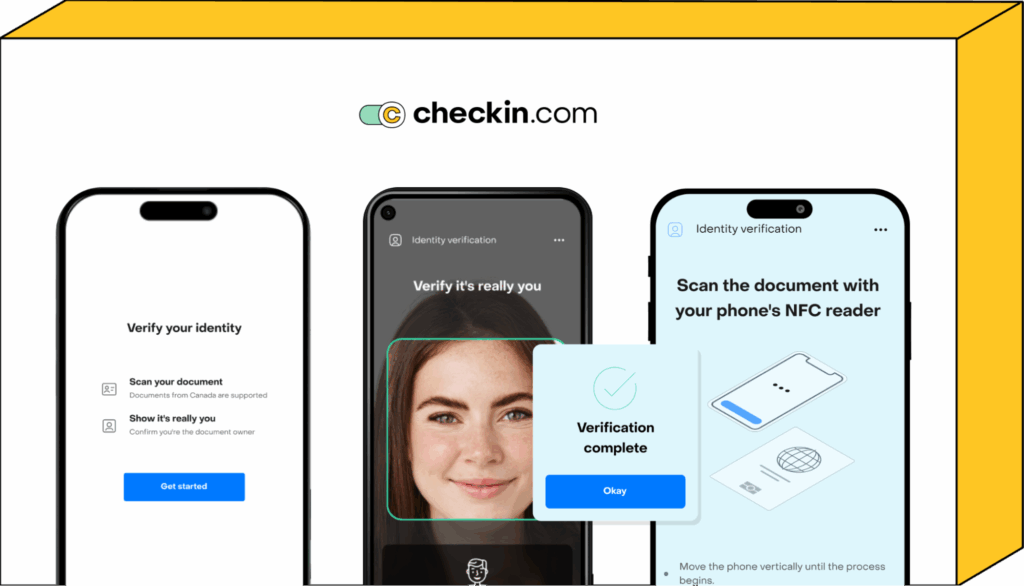
Digital onboarding KYC (Know Your Customer) is a form of onboarding and identity verification that’s mission-critical in numerous sectors, such as travel, finance, crypto, and iGaming.
Traditional onboarding and KYC ⏤ either manually or using outdated, legacy software ⏤ is time-consuming, costly, and can kill a new customer relationship before it starts.
In the financial sector, KYC and anti-money laundering (AML) onboarding compliance is the foundational pillar of customer relationships. You can’t open a new account without going through a stringent process. It’s up to financial sector organizations to make this as smooth and painless for new customers.
And yet, 90% of new potential U.S. banking customers never complete the sign-up process because of time-consuming onboarding flows, according to a Thomson Reuters report.
Banks and financial organizations are losing a lot of money from new customers because their KYC process is too hard. The same happens in other sectors, including crypto, travel, and iGaming.
Are you losing hard-won new customers because of your onboarding KYC process?
If so, then you need to keep reading.
In this article, we cover the advantages of digital onboarding KYC, how it works, and how to implement this so you save money and dramatically increase the ROI from your digital onboarding KYC process.
What is digital onboarding KYC?
Digital onboarding KYC is a way of verifying a customer’s identity online and conducting the compliance checks necessary to accept someone as a new customer.
Here’s how this breaks down:
- Know Your Customer (KYC) is a legal compliance-based process that businesses use to verify the identity of their customers.
- Digital onboarding is an online way to streamline the onboarding or check-in process. It’s quicker and more effective than manual onboarding using paper forms, and far more convenient.
- Put those together: Digital onboarding KYC is a simplified and more efficient way to onboard new customers while complying with KYC and AML laws.
In certain sectors ⏤ such as travel, finance, crypto, and iGaming ⏤ a digital onboarding process KYC is an essential part of establishing new customer relationships.
Every effort your organization makes to secure new customers will come to nothing if they drop-off during the onboarding and KYC process. Onboarding takes an average of 30 days for U.S. financial institutions, and 9 out of 10 never complete the onboarding flows.
Payment processing companies, such as DECTA, need the most accurate, cost and time-effective digital onboarding KYC software to prevent fraud for their customers and ensure compliance in every region they operate.
To switch from a manual in-house process to an automated, third-party approach, DECTA started using Checkin.com’s ID Verification, Document upload, back office management, and API features. With the help of Checkin.com, DECTA could speed up complex ID document checks by 20%.
Now, let’s see how digital onboarding KYC with Checkin.com compares to traditional and legacy system KYC onboarding.
Digital onboarding KYC vs. traditional KYC and onboarding
Digital KYC systems need to make it easy for people to sign up. They should follow the rules and use IDs to prove their identity. This will help reduce fraud, and make sure the person applying is a real person.
Digital onboarding checks that go through electronic KYC (eKYC) processes need to be as effective as possible in the following three areas:
- Compliance accuracy: Your KYC is either accurate or not. This needs to be as close to 100% as possible in every country, region, and territory your company works in. Always follow the rules, especially when it comes to checking documents and using biometrics.
- Revenue Impact: If an onboarding KYC workflow doesn't work for the new customers you've spent a lot of money on, it's not worth the investment and ongoing costs. If you’re losing too many new customers at this final stage in the onboarding funnel then you need to upgrade your customer experiences.
- Internal resources: If onboarding KYC workflows is too hard and takes too long, KYC won’t support growth, and it's wasting too many internal resources.
Let’s see how traditional and legacy system KYC onboarding compares with digital onboarding KYC.
Traditional, legacy onboarding and KYC
Every company that’s ever switched from traditional or legacy onboarding and KYC systems has done so for a combination of the following reasons:
- Manual processes: Having a team (depending on the volume of KYC/AML applications) manually inspect ID documents, photographs, and applications, and verify or decline them is time-consuming and resource-intensive. Digital onboarding checks are always going to be faster and more accurate than manual reviews of identity documents.
- Prone to error: People make mistakes, even with detailed procedures and processes.
- Susceptible to fraud: Manual systems are easy to defraud, especially with the rise of deepfakes and synthetic AI-generated IDs. The risk of fraud is too high. Using old systems and manual processes for KYC and AML makes your operations more risky.
- Fragmented: Piecing together multiple solutions in a single flow is often more inefficient than starting from scratch with a new vendor.
- Expensive: KYC and AML are important for your business, complex, and can be changed to fit your needs. This means that vendors charge a lot of money to set up and run these systems. With the right vendor, digital onboarding KYC doesn’t have to break the bank.
In comparison, digital onboarding KYC:
- Has a much better user experience (UX): Bad UX cripples the digital onboarding KYC process. A UX that is fast, efficient, and simple boosts onboarding, keeping drop-offs to a minimum and increasing revenue.
- Is accurate in an instant: ID, KYC, AML, with face matching or liveness detection provides an extra layer of real-time verification if a company requires that.
- Is global and local: Don’t worry about geographic restrictions. With a provider like Checkin.com can read, verify, and extract data from 14,000+ documents from 190+ countries, in 80+ languages. A powerful localization engine ensures you can be up and running in a new country as quickly as you want.
- Is bespoke to your onboarding flows: Your customers expect near-instant ID verification. Our system can do this in under 5 seconds. Your team needs a system that trains new people in KYC in stages. It should be easy for them to use, have back-office systems that can be checked and secure, and work with other software you use. Get the best of both worlds, for you and your customers.
- Is white-label and done-for-you (DFY): Benefit from a digital onboarding KYC solution that’s integrated as part of your brand for customers. At the same time, save your engineers and top leaders with a ready-made solution. This way, you won't spend a lot of money and time on your own to get everything up and running and integrated.
How digital onboarding KYC works
An integrated digital onboarding KYC like Checkin.com works in the following ways:
- ID scanning and verification that covers 14,000+ documents from 190+ countries, in 80+ languages.
- A sign-up and onboarding process that’s as seamless and fast as possible for end-users/customers.
- Facial recognition scanning and verifying Liveness to ensure that someone applying for onboarding is human, not an AI-generated bot.
- Safeguarding AML with automated Politically Exposed Persons (PEP) and their close associates (RCAs) verifications using Dow Jones data.
- Automatically checking dozens of sanctions lists too, such as OFAC, UN, HMT, EU, DFAT, and others.
For end-users ⏤ your customers and potential customers ⏤ all of that has to happen quickly and efficiently. Otherwise, you lose revenue through too many of these potential customers giving up on the process.

Challenges of digital onboarding KYC
The digital onboarding KYC process isn’t as simple as plug-and-play software.
It must work, be fast, efficient, and easy to use. It must be as accurate as possible, otherwise an organization could fail KYC and AML rules.
KYC and AML are binary ⏤ a person trying to sign-up either passes or fails. It’s up to the systems you use to determine if that person is who they claim. Ensuring the ID documents and other checks, such as real-time liveness, match with the details being provided during an onboarding sign-up process.
Achieving this with 100% accuracy, at scale, isn’t easy. Challenges include:
- Speed - slow workflows cause costly drop-offs;
- Language and localizations;
- Adapting to multiple devices and platforms;
- 100% accurate document and ID verification;
- Verifying someone is real in real-time;
- AI (artificial intelligence), bots, deepfake, and synthetic IDs;
- Security - keeping IDs and customer details secure is crucial.
Advantages of digital onboarding KYC
With the right digital onboarding KYC solution, your brand will gain numerous advantages over continuing to use legacy or manual systems for KYC and onboarding.
With a digital onboarding KYC system like Checkin.com, you will gain a significant ROI over legacy systems and processes.
During the onboarding process, drop-offs impact revenue. This is often overlooked, but if you have data on how many people start onboarding but don't finish it, that will be a big loss in revenue.
A faster, smoother, more user-friendly digital onboarding KYC process has a direct positive impact on conversions and revenue. It means you'll be compliant from the start, with a complete solution for every market you work in. You'll pay much less than manual checks and old software.
It’s equally important to provide a faster, more efficient, more user-friendly onboarding experience for customers. New customers who are better trained will make less of them leave, make more money, and find it easier to follow KYC and AML rules.

How to implement digital onboarding KYC
Implementing a digital onboarding KYC workflow is unique for every company and operational country or region.
There is no one-size-fits-all digital workflow. Everything requires customization, and that’s why legacy vendors in this space have justified expensive setup fees.
At Checkin.com, we flipped those concepts upside down. You can have customization without the expensive setup costs. You can have multi-region KYC without months of complexity, setup, and integrations.
Here is how we deliver this for the three core sectors we serve: travel, finance/crypto, and iGaming.
Digital onboarding KYC for the travel sector
Global travel brands, such as low-cost airline, Ryanair, trust Checkin.com to deliver a seamless digital checkin process for millions of passengers worldwide.
Give your customers engaging flows that your customers will actually enjoy while ensuring every ID document is verified for KYC and AML. Use Liveness and face recognition to ensure they’re the person the documents claim.
Digital onboarding KYC for the finance/crypto sector
KYC and AML verifications are absolutely crucial in the financial, payments, payments processing (PSP), money transfer, and crypto sectors.
Get any of this wrong and you could be facing regulatory fines, loss of trust, and customers running out the door.
At the same time, if you have a digital onboarding KYC flow that isn’t smooth or user-friendly then you risk losing customers because they will go elsewhere.
Checkin.com solves this with the best of both worlds: a robust KYC process that’s user-friendly. Keeping your KYC, AML, and onboarding compliant while reducing drop-off rates and increasing customer retention and satisfaction.
Digital onboarding KYC for the iGaming sector
iGaming, online gambling, and casinos spend a fortune to win new customers. The last thing you want is to lose them at the onboarding KYC stage.
Get an almost immediate 18% increase in conversions because your eKYC process for your app/website is optimized for every location and type of device.
Want to launch a new brand or expand into a new market?
That’s not a problem with Checkin.com either, with our software equipped for verifying 14,000+ documents from 190+ countries, in 80+ languages.

Key Takeaways: Digital onboarding KYC
Digital onboarding KYC is an integral part of compliance and the customer experience.
Whether you want to launch in new markets or upgrade what you’re currently using, getting this right is crucial for regulatory compliance and improving conversions through the onboarding process.
In this article, we talked about how:
- How a faster, more efficient, and UX-friendly digital onboarding check will generate a guaranteed ROI during the customer onboarding process thanks to increased customer satisfaction and reduced drop-offs.
- Digital onboarding KYC is not an off-the-shelf solution. However, until now there hasn’t been an end-to-end onboarding solution that handles the entire KYC lifecycle–from signups to logins that’s cost and time-effective to implement.
- Checkin.com is designed to boost conversions during onboarding, with more enterprise brands seeing an 18% uptick thanks to the UX, localizations, and speed compared to legacy providers.
If you are ready to get started with Checkin.com, book a 1-on-1 call with our team and we’ll get back to you with a customized workflow for your company.